How to Grow Kohlrabi: Complete Beginner's Guide

Written by
Julia Anderson
Reviewed by
Prof. Martin Thorne, Ph.D.How to grow kohlrabi successfully requires 6+ hours of daily sunlight
Optimal soil pH for kohlrabi ranges between 6.0-7.5 for nutrient absorption
Harvest kohlrabi bulbs at 2-3 inches diameter for peak crispness
Water 1-1.5 inches weekly to prevent woody, bitter bulb formation
Combat pests with floating row covers and neem oil sprays at first sighting
Store fresh kohlrabi in 95% humidity at 36°F/2°C for 14 days
Article Navigation
Understanding the quirks of how to grow kohlrabi is the first step. I remember giving a neighbor a fist-sized bulb of kohlrabi vegetable and he thought it was a UFO. This fast-growing brassica, with both crunchy stems perfect for slaws and tender greens excellent for stir-fries, astonishes novice gardeners with its directional bounty. Timing is everything. If planted too late, the heat of summer will cause the bulb to become woody.
Space the seedlings 6 inches apart because having them too close together will stunt growth. I learned this the hard way in my first crop when I paid no attention to spacing and ended up with bulbs the size of marbles. Kohlrabi is fond of rich soil with something like compost added to it. Water it deeply, but don't over-saturate the roots. Regular moisture will help prevent bitterness from developing.
Harvest when the bulbs reach a width of 2-3 inches. Harvesting can be accomplished by twisting at the base or you can use a sharp knife. They will keep for weeks in the refrigerator, and should not be washed before storage. Unsightly leaves can be used to make pesto, while you can freeze any extra to add to soups in the winter months. Kohlrabi fits so easily into the garden, or in pots, for growing.
Soil Prep & Planting Guide
To prepare for kohlrabi, attention should be paid specifically to soil texture. For instance, heavy clay soils are mitigated by mixing into the soil 2 parts coarse sand to 1 part compost, which helps reduce the risk of waterlogging. Meanwhile, sandy soils should benefit from 3 inches of compost applied to the soil surface before planting. Before planting, you can also get a soil test kit to measure the soil pH. The goal is to have the soil pH between 6.0 - 7.5. If the soil pH is too acidic, then apply 5 pounds of lime per 100 square feet. Soil that is too alkaline can be amended with sulfur. I learned all of this after losing a crop one season to soil pH that had not been tested!
Sow seeds to a depth of 1/4 inch (6 mm) in rows that are 12 inches apart. For transplants, dig a hole that is the same depth as the starter pot - about 4 inches (10 cm). Direct sowing works best in early spring when the soil temperature is about 45°F (7°C). For transplants, the advantage is that they can get a 3-week jump on flower development simply because they started to grow under grow lights for a few weeks indoors. I generally prefer to sow seeds directly, rather than using transplants, to help avoid disturbing the roots of the plant, but I use transplants in the fall crops to escape the summer heat.
Successful gardening relies on timing. For spring crops, direct sow 2-4 weeks before your last reported frost. If you'd like to plant transplants for fall harvests, you'll want to transplant 6 weeks before the first frost. Stagger any transplant plantings every 10 days for a continuous yield. Also, be sure to mulch your seedlings in straw to retain moisture and suppress weeds, but be careful not to suffocate the stems.
pH Testing
- Target range: 6.0-7.5 pH using digital meters
- Adjustment: Add 450 g (1 lb) lime per 10 sq m (100 sq ft) if below 6.0
- Timing: Test 4 weeks before planting
Planting Depth
- Seeds: 0.6 cm (0.25 in) depth in rows 30 cm (12 in) apart
- Transplants: Match original soil level from starter pots
- Spacing: 15-20 cm (6-8 in) between plants
Frost Dates
- Spring planting: Sow 2-4 weeks before last frost at 10°C (50°F)
- Fall planting: Start 10 weeks before first frost at 21°C (70°F)
- Protection: Use row covers below 4°C (40°F)
Compost Ratios
- Clay soils: 2:1 sand-to-compost ratio by volume
- Sandy soils: 5 cm (2 in) compost layer
- All types: Avoid fresh manure to prevent nitrogen burn
Water Requirements
- Frequency: 2-3 times weekly in sandy soils
- Amount: 2.5 cm (1 in) water weekly equivalent
- Signs of stress: Wilting leaves at dawn

Kohlrabi Seeds
- Germination: 5-10 days at 18-24°C (65-75°F)
- Sowing rate: 3 seeds per 10 cm (4 in) interval
- Thinning: Keep strongest seedling at 2 true leaves
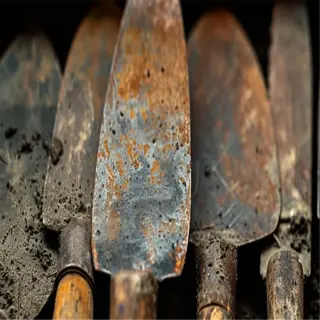
Seedling Trowel
- Transplant depth: Match nursery soil level
- Spacing: 30 cm (12 in) rows for airflow
- Watering: 500 ml (17 oz) per plant after transplanting
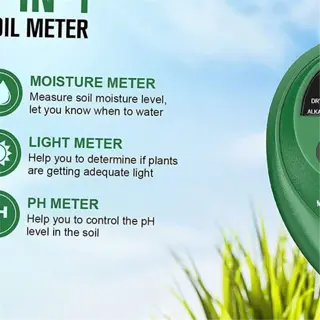
Soil pH Meter
- Calibration: Required before first use with buffer solution
- Depth: Insert probe 15 cm (6 in) into moist soil
- Timing: Test morning/evening for stable readings

Seed Spacer Template
- Material: Durable plastic with 10 cm (4 in) markers
- Usage: Press into soil to create uniform holes
- Benefits: Prevents overcrowding in rows
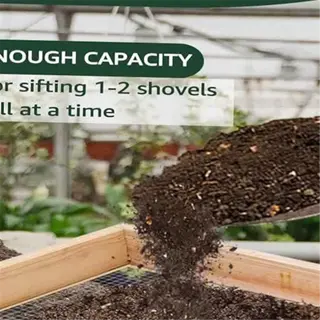
Compost Sieve
- Mesh size: 0.6 cm (0.25 in) for fine texture
- Application: Remove twigs before amending soil
- Storage: Hang vertically to save space

Mulch Layer
- Materials: Straw/grass clippings 5-7.5 cm (2-3 in) thick
- Timing: Apply after second set of true leaves
- Warning: Keep 2.5 cm (1 in) from stems
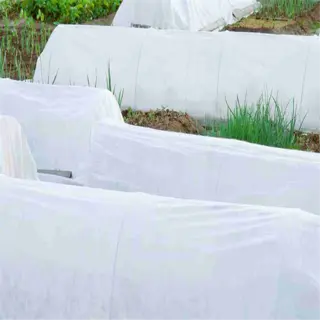
Frost Blanket
- Material: Lightweight polypropylene with UV treatment
- Installation: Secure edges with soil or rocks
- Ventilation: Remove daily above 10°C (50°F)
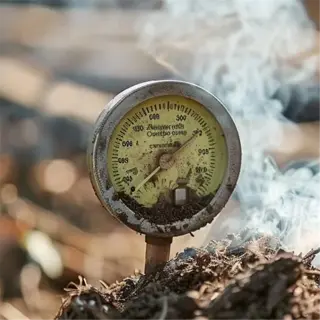
Soil Thermometer
- Ideal range: 18-24°C (65-75°F) for germination
- Depth: Measure at 5 cm (2 in) depth
- Timing: Check 3 days before planting

Dibbler Tool
- Spacing: Creates 4 cm (1.5 in) deep holes
- Material: Hardwood with depth markings
- Use: Perfect for transplanting seedlings
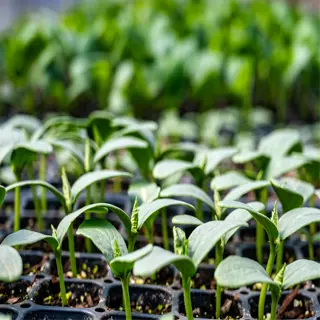
Seedling Trays
- Cell size: 5x5 cm (2x2 in) for root development
- Drainage: Requires 2 holes per cell
- Sterilization: Soak in vinegar solution between uses
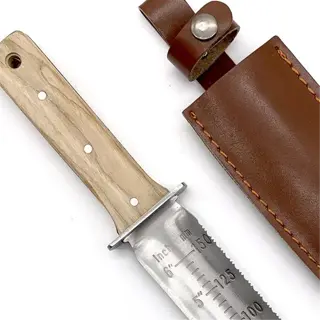
Hori-Hori Knife
- Uses: Weeding, transplanting, and bulb harvesting
- Blade: 18 cm (7 in) with depth measurements
- Care: Wipe clean after each use
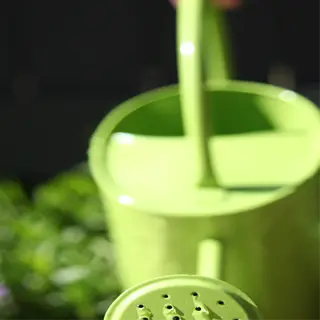
Watering Can
- Capacity: 5 liters (1.3 gallons) for easy handling
- Nozzle: Adjustable rose for gentle showers
- Material: Galvanized steel for durability
Choosing the Best Kohlrabi Variety
Grasping how to grow kohlrabi starts with selecting what variety works best for you. Early White Vienna matures fairly quickly, in just 55 days, great for impatient gardeners! The Giant Kossak takes 80 days but will store for months. I have had great luck with staggered plantings of either variety to extend harvests of both from spring until frost. The purple types, such as the Kolibri Hybrid, provide visual punch but need a little extra protection from frost compared to the green varieties that are hardier.
A key differentiator between winners and winter casualties is cold tolerance. Purple kohlrabi can endure short dips to 25°F (-4°C) with a strong hardening off-stage. The green variation can withstand somewhat lower temperatures, but because their tops are less firm, they tend to rot faster in the soil as the days go by in cold, wet soil after harvest. My trials for Zone 6 revealed that the Grand Duke green types performed better in terms of over-wintering under straw, than the purple varieties.
Ensure the appropriate bulb size for your growing environment. Compact types like Quickstar have an 8-inch container spacing, while Kossak will want about 18-inch spacing for its sprawling habit. I use the large types for raised beds and smaller varieties are typically lumped between flowers. I've unsuccessfully grown oversized bulbs in cramped quarter-sized spaces which split and caused me years of headaches.
Details of flavor are important. Purple kohlrabi tends to taste sweeter when eaten raw, while green kohlrabi is better when roasted. Superschmelz is best if the kohlrabi grows to a size of around 10 inches in diameter as it will stay tender. I have served both kinds of kohlrabi at dinner parties and dinner guests have never guessed they are the same species of vegetable. It is best to try different varieties before deciding to plant a large amount.
Climate Zones
- Cold climates: Choose frost-tolerant Kolibri (survives -4°C/25°F)
- Hot climates: Fast-growing Grand Duke avoids bolting
- Humid areas: Disease-resistant Superschmelz
Flavor Profile
- Sweetest: Early White Vienna (raw eating)
- Mildest: Kossak (soups/stews)
- Peppery notes: Kolibri Hybrid
Space Efficiency
- Small gardens: Grand Duke at 15 cm (6 in) spacing
- Large plots: Kossak needs 30 cm (12 in) between plants
- Container-friendly: Early White Vienna
Disease Resistance
- Clubroot-resistant: Superschmelz Hybrid
- Black rot tolerance: Kolibri Hybrid
- General hardiness: Kossak
Storage Capacity
- Short-term: Early White Vienna (2 weeks fridge)
- Long-term: Kossak (4 months root cellar)
- Processing: Superschmelz for freezing
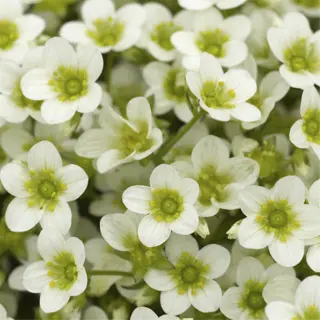
Early White Vienna
- Maturity: 55 days at 15°C (60°F)
- Yield: 700-900 g (1.5-2 lbs) per plant
- Special trait: Bolt-resistant in spring

Kolibri Hybrid
- Cold hardiness: Survives -6°C (21°F)
- Skin color: Deep purple with white flesh
- Culinary use: Vibrant raw salads
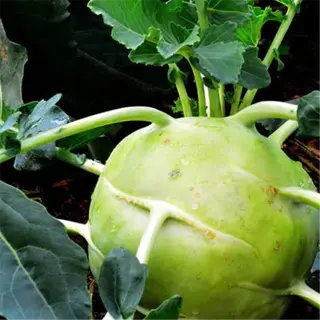
Kossak Hybrid
- Storage: 4 months at 2°C (36°F)
- Texture: Stays crisp when large
- Cooking: Ideal for stews and roasts

Grand Duke
- Speed: Ready in 50 days
- Space-saving: 15 cm (6 in) spacing
- Taste: Mild flavor for kids
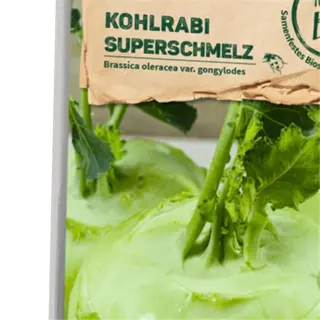
Superschmelz
- Disease resistance: Immune to clubroot
- Size: 15-18 cm (6-7 in) without woodiness
- Versatility: Raw or cooked
Watering and Pest Management
Finding the right water application methods plays a significant role in kohlrabi's growing success. For example, drip irrigation applies water directly to the soil for root uptake, eliminating leaf wetting and lowering the chances of mildew. Overhead sprinklers provide quick cooling during heat waves, but they also create disease problems if the crop plus soils are wet. I learned the hard way when I lost a crop to leaf rot, then switched to soaker hoses which leave kohlrabi bulbs fat and disease-free.
Bulb firmness is determined by soil moisture. Check the soil weekly, 3 inches down should feel damp. Crunchy bulbs mean drought stress and split skins mean inconsistent watering. One of my poorest harvests was during a vacation when the ambient temperature increased and my neighbor forgot to turn the hose on. Consistency never waivers.
Detect pests early. Flea beetles will pockmark leaves with tiny holes. Cabbage loopers will skeletonize the entire foliage overnight. Slugs leave slimy trails. I check the undersides of affected plants during the early morning when pests are feeding. You can also use yellow sticky traps for winged insects that land in your garden. If life gets out of control, mix up a 1:10 solution of neem oil as a spray to smother unknown larvae without harming bees.
The best defense against pests organically is prevention. Row covers are effective against moths that would lay their eggs in brassicas. Planting dill as a companion plant attracts beneficial wasps. I had an aphid infestation on my purple kohlrabi; I released ladybugs in the late evening and in the morning they cleared all of the aphids. Chemical pesticides remain in the soil longer and I would rather lose some leaves.
Soil Moisture Checks
- Ideal depth: Moisture at 15 cm (6 in) depth
- Sandy soils: Water 3x weekly @ 2.5 cm (1 in) per session
- Clay soils: 1x weekly @ 5 cm (2 in) deep watering
Drought Response
- Mulching: 7.5 cm (3 in) straw layer
- Shade cloth: 30% shade during heatwaves >32°C (90°F)
- Wilting: Water at dusk to prevent sunscald
Container Watering
- Frequency: Daily in temperatures >26°C (80°F)
- Self-watering pots: Maintain 2.5 cm (1 in) reservoir
- Drainage: Ensure holes unclogged
Preventative Measures
- Crop rotation: 4-year brassica-free intervals
- Row spacing: 45 cm (18 in) for airflow
- Sanitation: Remove debris hosting overwintering pests
Tool Maintenance
- Hoses: Drain completely before frost
- Sprinklers: Clean nozzles monthly
- Meters: Calibrate pH probes seasonally
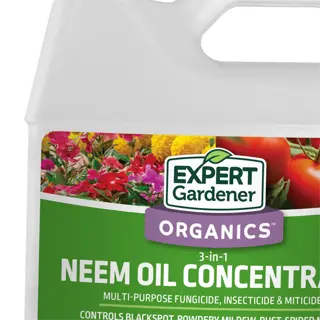
Neem Oil Concentrate
- Mixing ratio: 15 ml/liter (2 tbsp/gallon)
- Application: Spray undersides of leaves
- Timing: Evening applications avoid sun damage
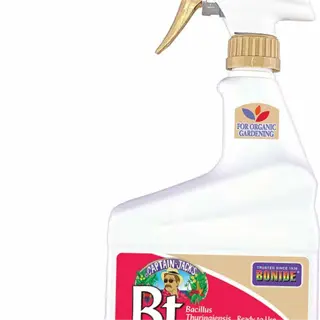
BT Spray
- Effective against: Caterpillars only
- Reapplication: After heavy rain
- Safety: Harmless to bees and ladybugs
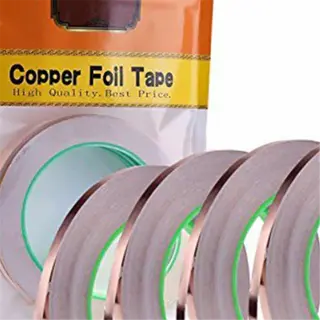
Copper Tape
- Slug barrier: 5 cm (2 in) width
- Installation: Wrap around container rims
- Maintenance: Clean oxidation monthly

Soil Moisture Meter
- Depth range: 30 cm (12 in) capability
- Calibration: Test in water first
- Battery: 9V lasts 2 growing seasons

Row Cover Fabric
- Weight: 17 g/m² (0.5 oz/yd²) for pest exclusion
- Installation: Secure edges with soil
- Ventilation: Remove when temps exceed 27°C (80°F)
Harvesting for Perfect Bulbs
When to time your kohlrabi harvest can make a difference in flavor. Spring bulbs will taste best when they are harvested at approximately 2-3 inches wide, and anything larger will be firmer and more at risk for woodiness. Fall crops can be larger, growing to 4 inches in diameter, as long as they are growing in cooler temperatures. I left a spring bulb too long and lost all the crispness to a fibrous disappointment. Fall varieties will be sweeter with the frost but watch out for hard freezes which will damage The cell structure.
Look out for visual signs. For spring bulbs, the smooth and taut skin should not show cracks at harvest time. For fall varieties, deeper color should appear after a light frost. I usually check by pushing in my thumbnail gently. Spring bulbs should hold their shape, while fall varieties give in slightly. Always harvest in the mornings to help preserve moisture.
Cut the foliage down to approximately 1-2 inches above the bulb. Keeping the stems will slow down the depletion of water from the bulb through the foliage. I learned this the hard way when I stored some leafy bulbs and they took only a few days to shrivel up. Unwashed bulbs can be refrigerated in perforated bags. If you are storing in a root cellar, you can layer the bulbs in slightly damp sand. My grandma would use this method and keep them until New Year's.
Frost alters sugars. When the night is around 28°F (-2°C) you will see an increase in sweetness, but you will need to pick those. If there is a potential for frost before maturity, use row covers. I always do a taste test of my fall harvest after coming through a frost, the crunch with caramelization is worth the extra attention. Cold-tolerant varieties like Kossak handle fallen temperatures very well.
Size Verification
- Measurement: Use calipers at widest bulb diameter
- Threshold: Minimum 5 cm (2 in) for tender texture
- Oversized: Over 10 cm (4 in) risks woodiness
Firmness Test
- Method: Gentle thumb pressure on bulb
- Ideal: Slight give without soft spots
- Warning: Hardness indicates over-maturity
Cutting Technique
- Tool: Sharp hori-hori knife angled downward
- Depth: 2.5 cm (1 in) below bulb base
- Sanitation: Wipe blade with alcohol between plants
Leaf Management
- Retention: Keep 2-3 leaves for moisture control
- Trimming: Cut 5 cm (2 in) above bulb crown
- Disease Check: Remove yellowed/damaged leaves
Field Curing
- Duration: 2-3 hours morning sun
- Conditions: 18-21°C (65-70°F) with airflow
- Avoid: Direct midday sun causing scalding

Stainless Harvest Knife
- Blade length: 15 cm (6 in) serrated edge
- Handle: Non-slip grip for wet conditions
- Care: Sharpen weekly during peak harvest
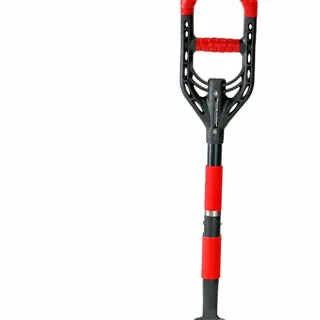
Root Digging Fork
- Tines: 4 rounded prongs @ 5 cm (2 in) spacing
- Leverage: 60 cm (24 in) handle length
- Use: Loosen soil without piercing bulbs
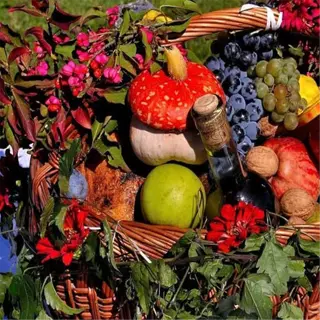
Harvest Basket
- Capacity: 10 kg (22 lbs) weight limit
- Ventilation: 2.5 cm (1 in) mesh sides
- Padding: Line with damp burlap
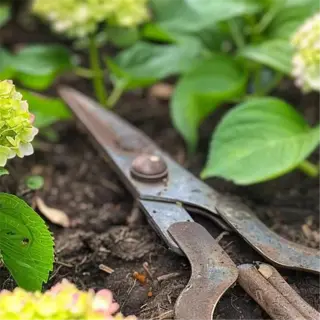
Pruning Shears
- Cut capacity: 2 cm (0.75 in) stems
- Safety: Spring-loaded automatic open
- Sterilization: Dip in vinegar solution

Curing Rack
- Dimensions: 60x90 cm (24x36 in)
- Spacing: 5 cm (2 in) between slats
- Location: Shaded, well-ventilated area
Storing and Using Your Crop
The preservation of kohlrabi freshness requires some thought and an approach. Keeping the kohlrabi in the refrigerator, where the bulbs remain intact and crispy for up to three weeks at 36°F (2°C) and 95% humidity, means wrapping the bulbs in damp towels and placing them in perforated plastic bags. If you have space in a root cellar or shed, kohlrabi can be kept even longer by layering the bulbs in a sand-filled crate at 40°F (4°C). My standing stock in a cellar can last until March before it shrivels!
The key to freezing something is accuracy. Blanch the cubes that are one inch thick for three minutes, and then shock them in ice water. The blanching will help move some excess moisture from the product. You will want to dry them before placing them in vacuum seal bags. The smaller (1-inch) pieces (plum or even smaller) break down or turn mushy. The Kossak Hybrid freezes particularly well as it is denser, making it more tolerant to temperature fluctuations.
Fermenting reveals the sour potential of ingredients. To ferment, for instance, wash and shred bulbs with carrots, then pack them into jars with a 3% brine solution, and weigh down the vegetables so that they are slightly submerged beneath the solution. Remember to 'burp' the jars daily for 7 days. My kimchi recipe, which uses gochugaru and ginger, became a quintessential winter recipe for immune-boosting probiotic foods during the flu season.
Select varieties based on their intended use. Early White Vienna is delicious raw in salads but loses its crispness after 2 weeks in the cold. Giant Kossak meets 4 months of storage in cellars. I roast long-storage varieties with some rosemary, with the caramelization masking any changes in texture due to being long-holding.
Refrigeration Prep
- Leaf removal: Trim to 2.5 cm (1 in) above bulb
- Cleaning: Brush soil (no water contact)
- Packaging: Perforated plastic bags
Cellar Storage
- Curing: 48 hours at 15°C (60°F) pre-storage
- Layering: Sand-filled crates alternating bulbs
- Inspection: Weekly mold checks
Freezing Process
- Blanching: 3 minutes in boiling water
- Shocking: Ice bath for texture retention
- Portioning: 500g (1 lb) freezer bags
Fermentation Basics
- Brine strength: 3% salt-to-water ratio
- Weighting: Glass weights to submerge bulbs
- Burping: Daily gas release first week
Dehydration Steps
- Slicing: 0.6 cm (0.25 in) uniform chips
- Pretreatment: Lemon juice dip for color
- Storage: Airtight jars with silica packets
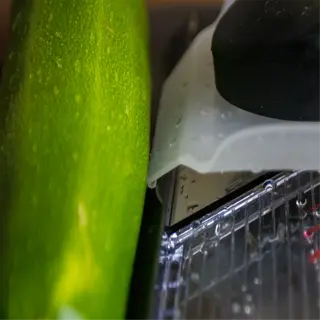
Mandoline Slicer
- Blade options: 1-5 mm thickness settings
- Safety: Cut-resistant glove included
- Cleaning: Dishwasher-safe components
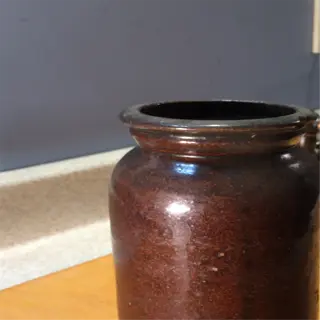
Fermentation Crock
- Capacity: 5-liter (1.3-gallon) stoneware
- Weight system: Water channel + clay weights
- Seal: Grooved lid for CO₂ escape
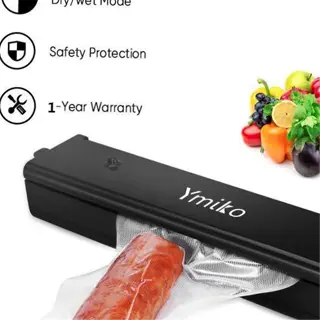
Vacuum Sealer
- Bag size: 20 cm (8 in) wide rolls
- Presets: Dry/Moist food modes
- Maintenance: Monthly oiling of suction channel

Dehydrator Trays
- Material: BPA-free plastic mesh
- Spacing: 2.5 cm (1 in) between trays
- Cleaning: Soak in baking soda solution

Root Cellar Racks
- Slat spacing: 5 cm (2 in) airflow gaps
- Load capacity: 25 kg (55 lbs) per shelf
- Treatment: Food-safe mineral oil finish
5 Common Myths
Once kohlrabi bulbs are bigger than a golf ball, they will be unusable
For the best tenderness, kohlrabi bulbs, are best harvested at 5-8cm/2-3in, but bulbs up to 25cm/10in are still usable as though they were much smaller when peeled. Just remember to harvest if the temperature is approaching or exceeds 24C or 75F degrees, as they become woody, no matter size.
Chemical fertilizers are needed to prevent hollow heart disorder
Hallow stems occur from a lack of constant watering, not nutritional deficiency. Maintain soil moisture, down to 25cm/10 in depth, using drip irrigation and mulch. Aged compost has ample boron and calcium without the use of synthetic amendments.
Keeping leaves intact during storage will prolong the freshness of your product
Leaf stems suck moisture away from bulbs and speed up the drying process. You want to use sanitized shears to cut the leaves off to within 2.5 cm/1 in above the bulb. It will be best if you can store unwashed bulbs in 95% humidity environments so that the bulbs will not shrivel.
Kohlrabi can't survive temperatures below freezing
Established plants tolerate -4C/25F for 4-6 hours when hardened gradually. Use row covers during unexpected frosts. The real danger is prolonged cold below -1C/30F during bulb formation stages.
Plants that bolt must be removed and thrown away immediately.
The flowering stalks denote the end of plant development for the bulb, although the leaves are still edible. If harvested within 48 hours of bolting, the leaves can be added to stir fries because they develop bitter compounds more slowly than other brassicas.
Conclusion
The kohlrabi variety choice plays a critical role in the entire growing process. For the impatient grower, the Early White Vienna variety, which harvests in only 55 days, will be very appealing; meanwhile, the Kossak variety takes a while to grow, but it produces substantial kohlrabi for winter storage. Through some trial and error, I have learned that misunderstanding the time to harvest a variety of kohlrabi often leads to cracked bulbs and disappointed expectations. It is always best to pair the cultivar with your climate and growing calendar.
Organic methods are worth their weight in gold, year after year. A well-timed application of neem oil, for example, will control flea beetles while causing no collateral damage. Cabbage worms, meanwhile, can be diverted from the fall crop by companion-planting nasturtiums. In addition to mitigating pest issues, methods like these are also building the health of the soil, which is an advantage of organic methods over the eons of lifeless dirt chemicals left behind.
Bulb size has a direct effect on your plate. Golf ball-sized kohlrabi provides crunch for fresh slaws, fist size is better when roasted. My kitchen tests of oversized Kossak bulbs show that they bake down silky when roasted, a lesson in how "flaws" become features with creativity. The timing of the harvest is your flavor dial.
As a way to create a sustained harvest, stagger your plantings every 10 days. I interplant Grand Duke, a fast-maturing crop, in between slower crops. This practice helps finish off space in the garden and keep variety in dinner menus. Each year, try one new gardening practice. For example, last year I tried companion planting garlic with kohlrabi and had huge, pest-free garlic bulbs and plump cloves. Curiosity equals mastery!
External Sources
Frequently Asked Questions
How long does it take to grow kohlrabi?
Kohlrabi matures in 45-60 days from planting. Fast-growing varieties like Early White Vienna reach harvest size in 50 days, while giant types like Kossak Hybrid need 80 days. Cool temperatures between 60-75°F accelerate growth.
What plants should not be near kohlrabi?
Avoid planting these crops nearby:
- Tomatoes (compete for nutrients)
- Strawberries (attract shared pests)
- Pole beans (inhibit bulb growth)
- Other brassicas like cabbage (disease risk)
Is kohlrabi suitable for beginners?
Yes, kohlrabi is beginner-friendly due to its fast growth and low maintenance. It tolerates imperfect soil better than most vegetables and resists common pests when given basic care like consistent watering and row covers.
Does kohlrabi require full sunlight?
Kohlrabi needs 6+ hours of direct daily sun for optimal bulb development. In hot climates, afternoon shade prevents premature bolting. Insufficient light causes small, woody bulbs.
Can you eat kohlrabi greens?
Kohlrabi leaves are edible and nutritious. Young leaves add crunch to salads, while mature leaves work best sautéed. Remove fibrous stems before cooking. Always harvest leaves sparingly to avoid stressing the plant.
Why aren't my kohlrabi forming bulbs?
Bulb formation fails due to:
- Overcrowded plants blocking sunlight
- Inconsistent watering causing stress
- Excessive nitrogen fertilizer promoting leaves over bulbs
- Temperatures above 80°F triggering premature flowering
Is kohlrabi a perennial plant?
No, kohlrabi is a biennial grown as an annual. It completes its lifecycle in two years but is harvested in the first season for bulbs. Frost-killed plants don't regrow in spring.
Can I grow kohlrabi in containers?
Yes, use 12-inch deep pots with drainage holes. Compact varieties like Grand Duke thrive in containers. Maintain consistent moisture and use potting mix with compost. Rotate pots daily for even sun exposure.
How do I store fresh kohlrabi?
For maximum freshness:
- Refrigerate unwashed bulbs in perforated bags (2-3 weeks)
- Root cellar storage at 36°F with 95% humidity (4 months)
- Freeze blanched slices for year-round use
What's the best way to eat kohlrabi?
Kohlrabi shines in both raw and cooked dishes:
- Raw: Julienne into slaws or dip in hummus
- Roasted: Toss with olive oil at 425°F for 25 minutes
- Fermented: Make kimchi-style pickles with chili flakes

